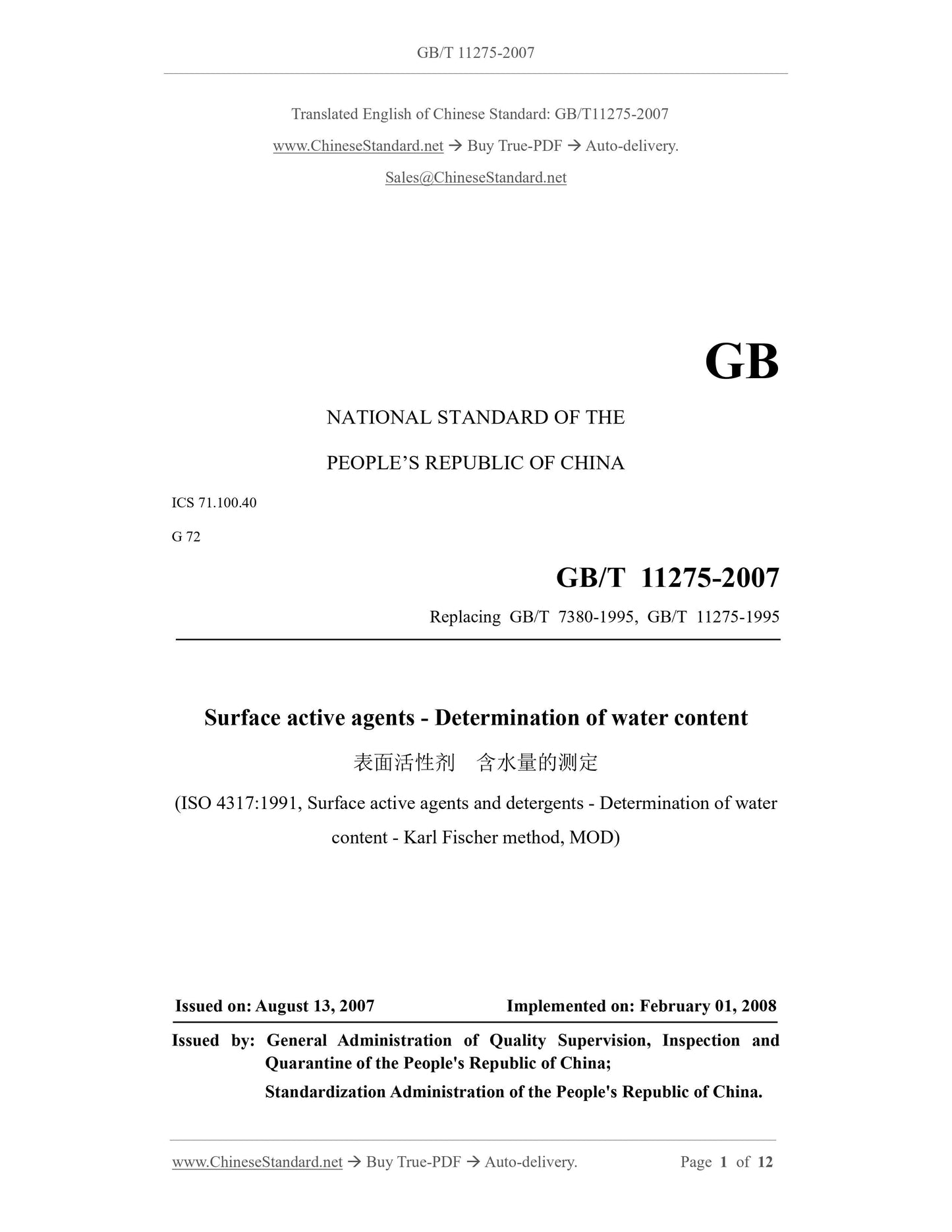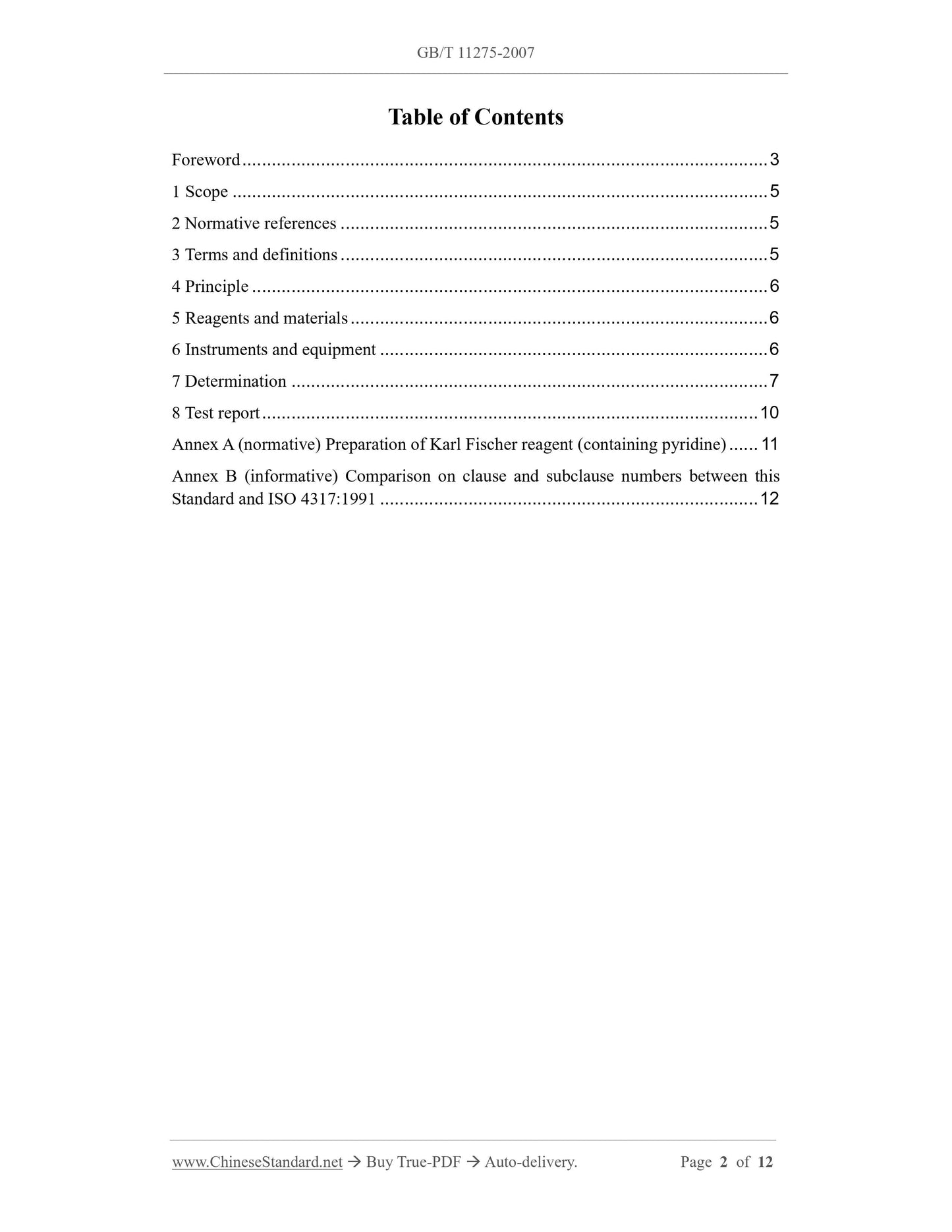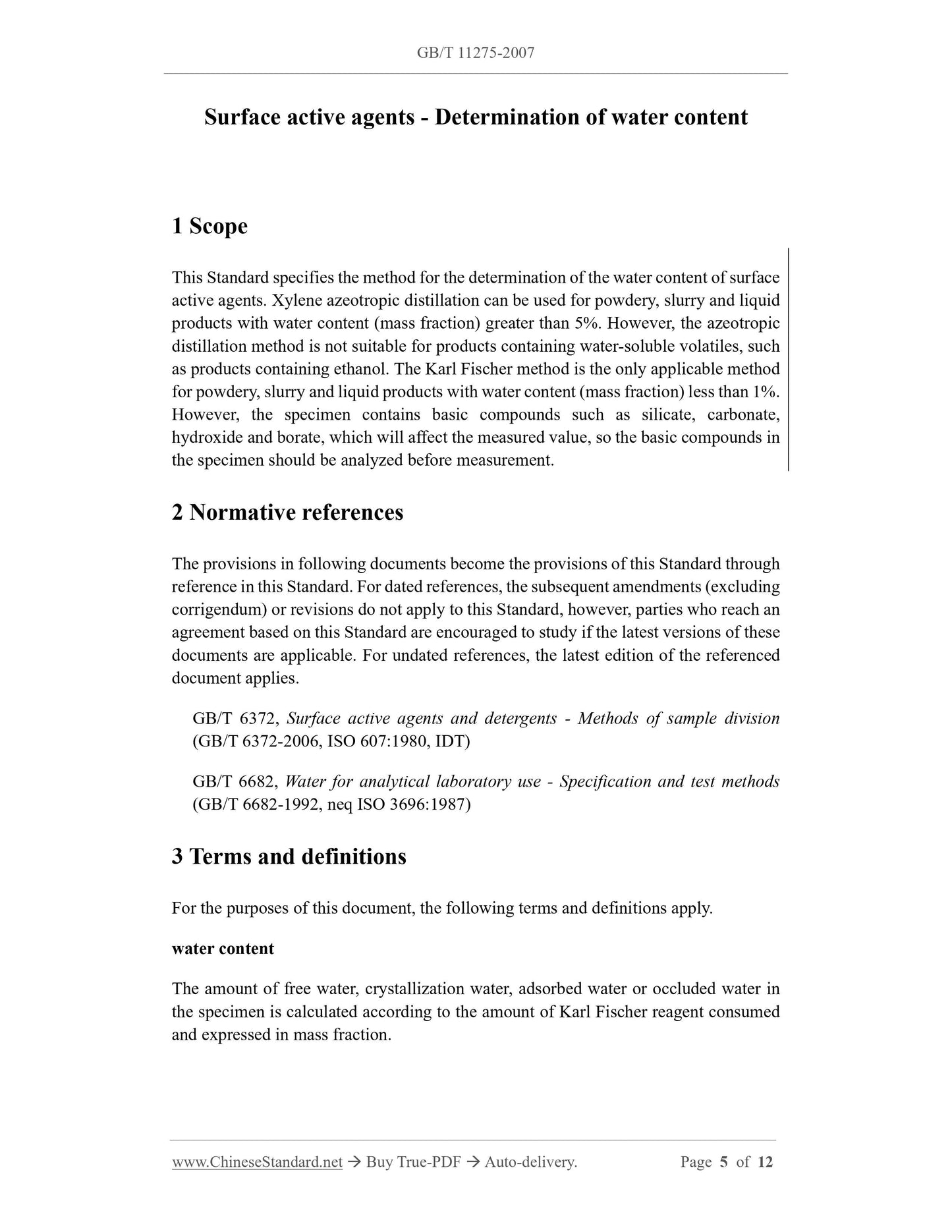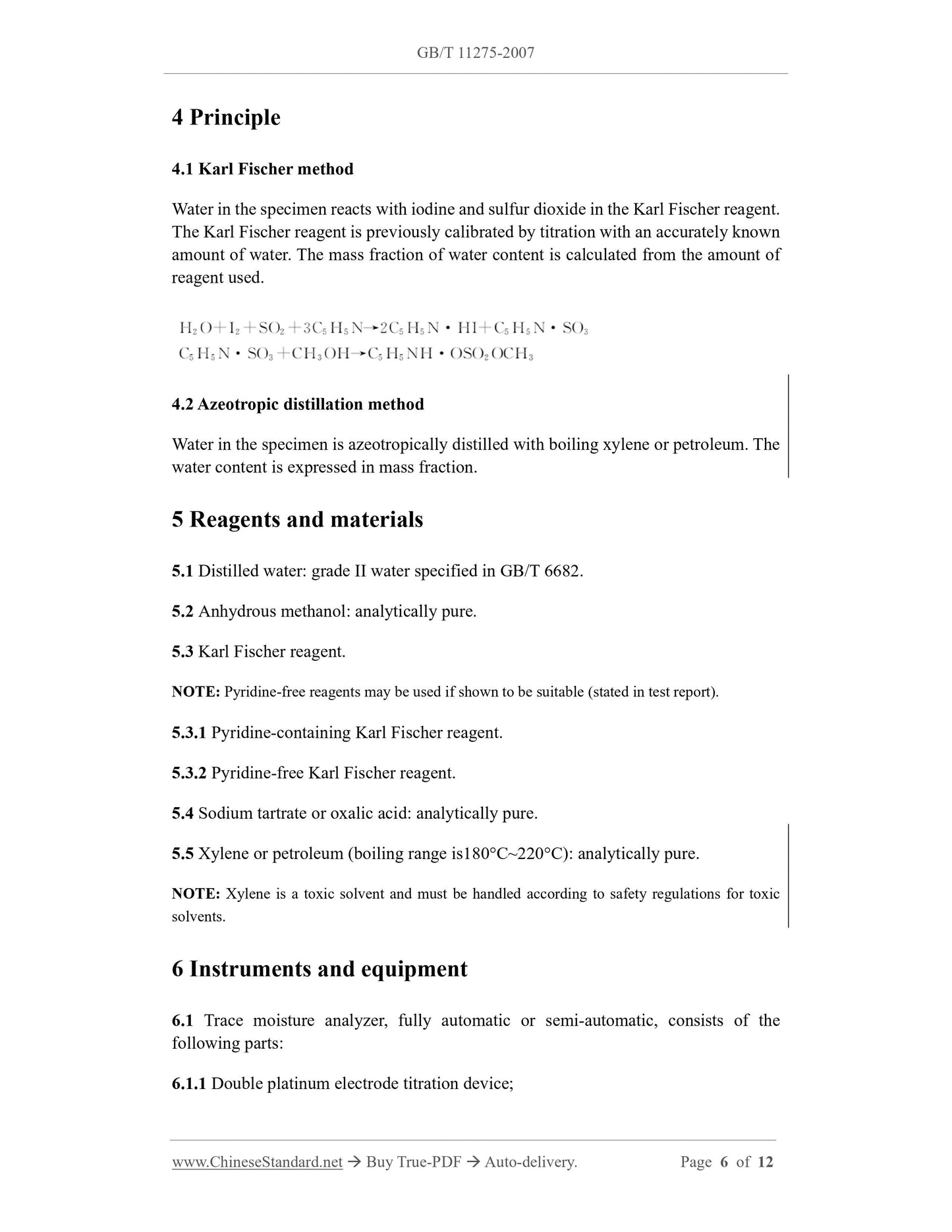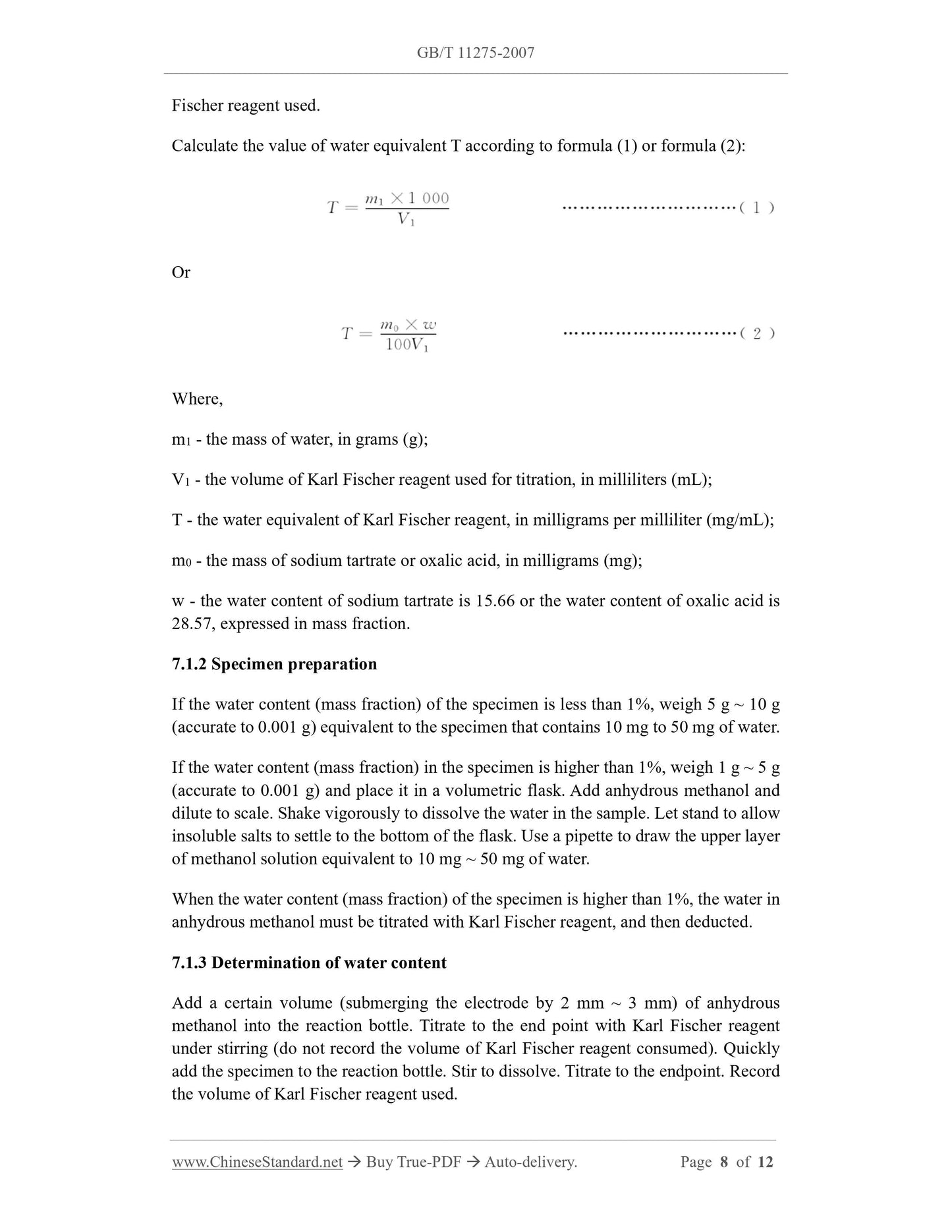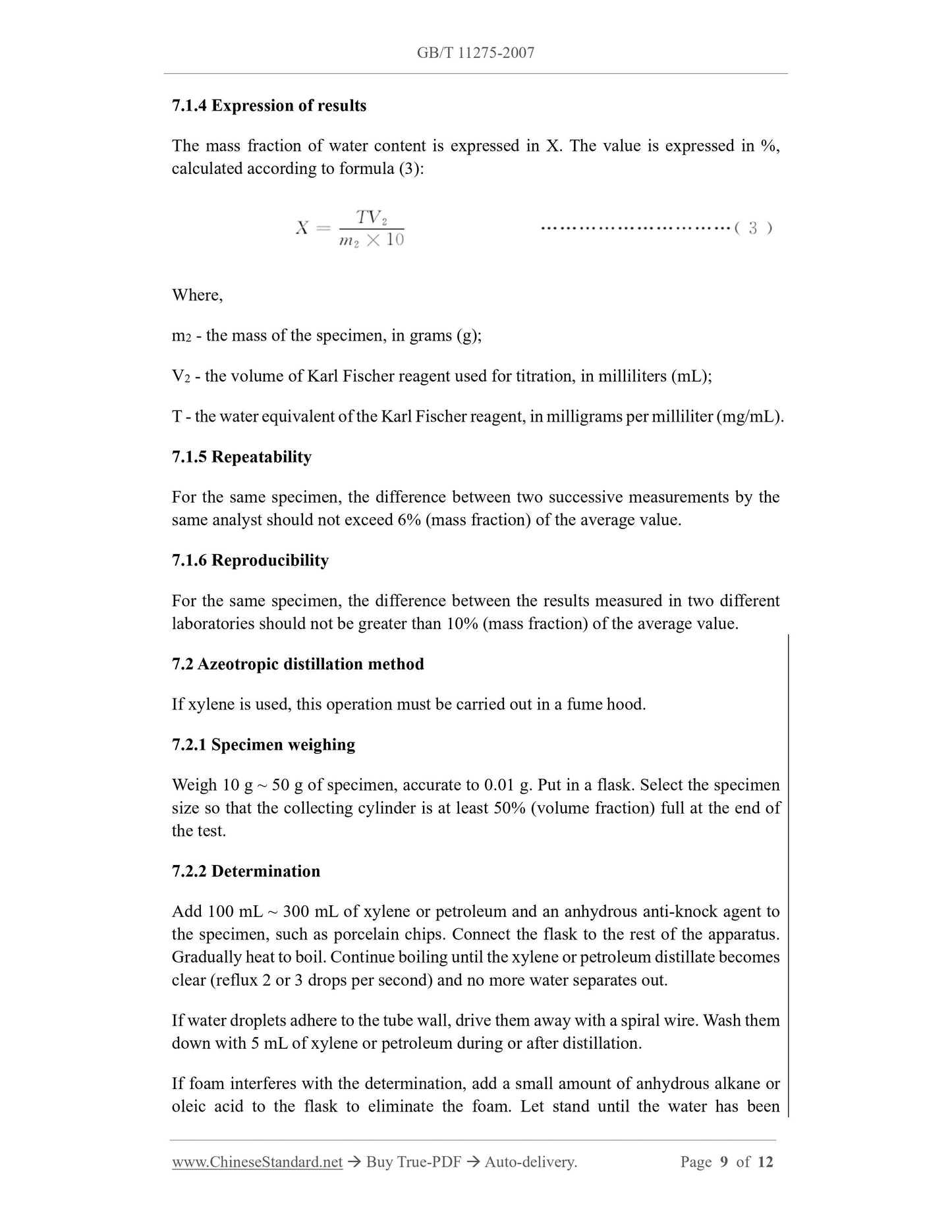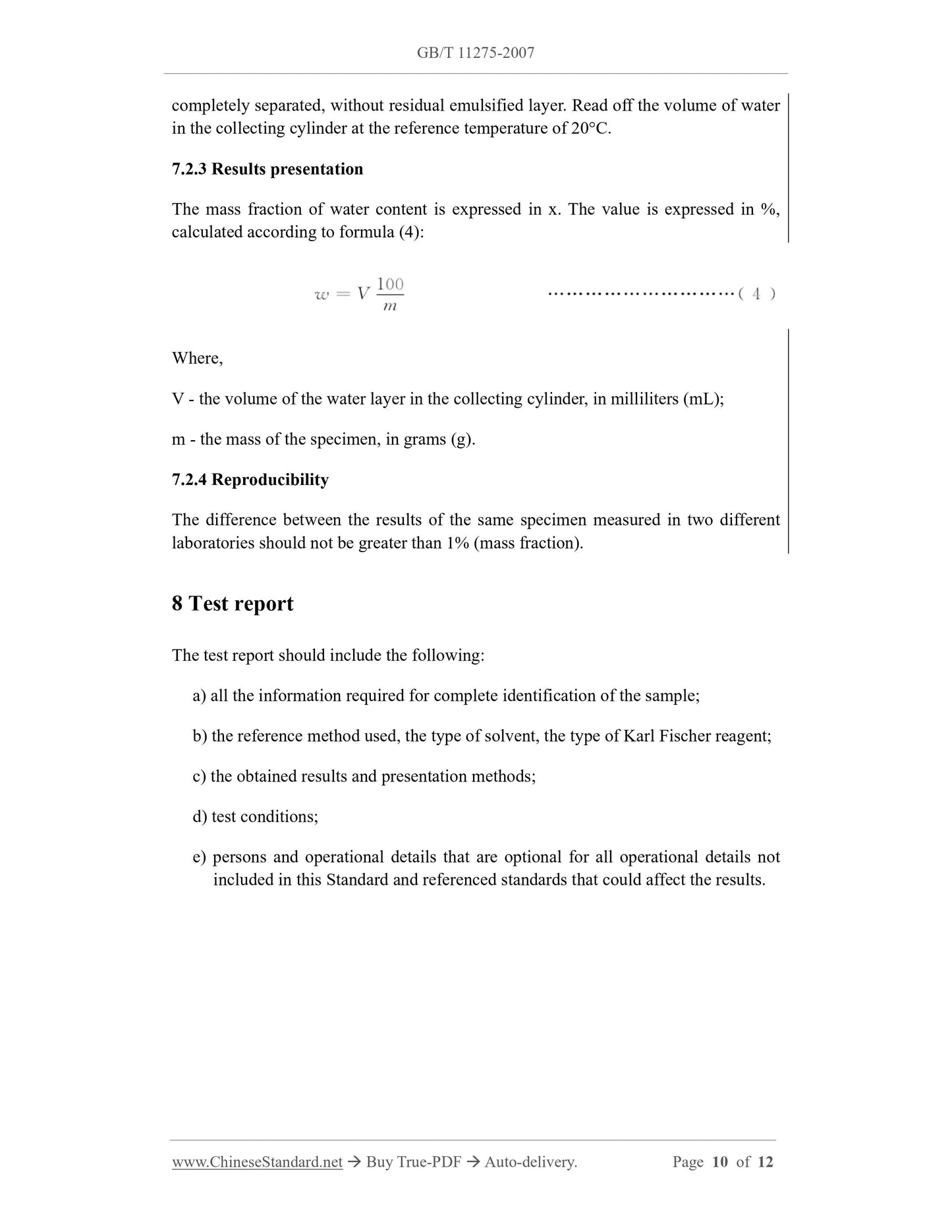1
/
of
7
www.ChineseStandard.us -- Field Test Asia Pte. Ltd.
GB/T 11275-2007 English PDF (GB/T11275-2007)
GB/T 11275-2007 English PDF (GB/T11275-2007)
Regular price
$190.00
Regular price
Sale price
$190.00
Unit price
/
per
Shipping calculated at checkout.
Couldn't load pickup availability
GB/T 11275-2007: Surface active agents -- Determination of water content
Delivery: 9 seconds. Download (and Email) true-PDF + Invoice.Get Quotation: Click GB/T 11275-2007 (Self-service in 1-minute)
Newer / historical versions: GB/T 11275-2007
Preview True-PDF
Scope
This Standard specifies the method for the determination of the water content of surfaceactive agents. Xylene azeotropic distillation can be used for powdery, slurry and liquid
products with water content (mass fraction) greater than 5%. However, the azeotropic
distillation method is not suitable for products containing water-soluble volatiles, such
as products containing ethanol. The Karl Fischer method is the only applicable method
for powdery, slurry and liquid products with water content (mass fraction) less than 1%.
However, the specimen contains basic compounds such as silicate, carbonate,
hydroxide and borate, which will affect the measured value, so the basic compounds in
the specimen should be analyzed before measurement.
Basic Data
| Standard ID | GB/T 11275-2007 (GB/T11275-2007) |
| Description (Translated English) | Surface active agents -- Determination of water content |
| Sector / Industry | National Standard (Recommended) |
| Classification of Chinese Standard | G72 |
| Classification of International Standard | 71.100.40 |
| Word Count Estimation | 9,960 |
| Date of Issue | 2007-08-13 |
| Date of Implementation | 2008-02-01 |
| Older Standard (superseded by this standard) | GB/T 11275-1995; GB/T 7380-1995 |
| Quoted Standard | GB/T 6372; GB/T 6682 |
| Adopted Standard | ISO 4317-1991, MOD |
| Regulation (derived from) | National Standard Approval Announcement 2007 No.8 (Total No.108) |
| Issuing agency(ies) | General Administration of Quality Supervision, Inspection and Quarantine of the People's Republic of China, Standardization Administration of the People's Republic of China |
| Summary | This standard specifies the method for measuring the moisture content of surfactant. Water content (mass fraction) of more than 5 % of the powder, slurry and liquid products can be produced I xylene azeotropic distillation. However, the azeotropic distillation of water-soluble N -containing volatiles products, such products containing alcohol. I containing water (mass fraction) of less than l% of the powder, slurry and liquid products Karl Fischer method is the only methods available. But sample containing I. |
Share
